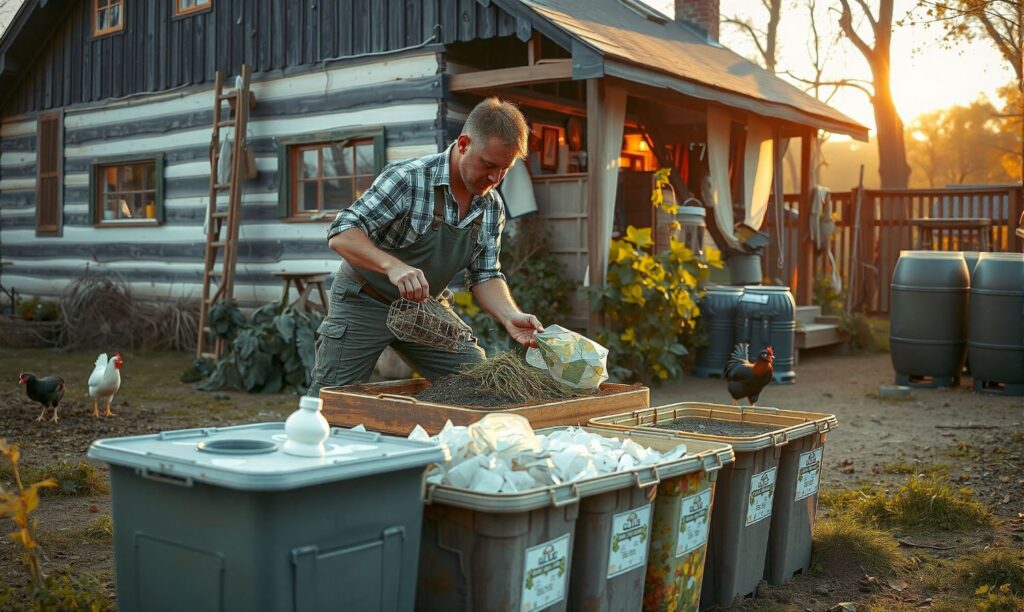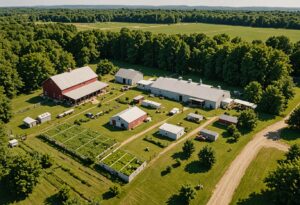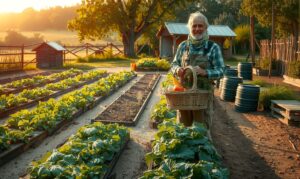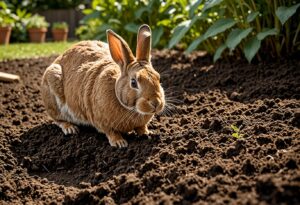
Living on a 5-acre homestead offers an incredible opportunity to embrace a sustainable lifestyle, but with that comes the responsibility to manage waste effectively. Reducing waste isn’t just about being eco-friendly; it’s about creating a more efficient, self-sustaining environment. In this guide, we’ll explore 10 practical and straightforward methods to reduce waste on your homestead, helping you live more sustainably while making the most of your resources.
Introduction: Why Reducing Waste on a 5-Acre Homestead Matters
As the world grapples with environmental challenges, waste reduction has become a crucial aspect of sustainable living. For homesteaders, reducing waste is not only about contributing to global environmental efforts but also about enhancing the efficiency and productivity of their land. On a 5-acre homestead, waste reduction can lead to better soil health, more productive gardens, and a more self-sufficient lifestyle. Let’s delve into these 10 easy ways to cut down waste on your homestead.
Composting Kitchen and Yard Waste to Reduce Waste
Composting is one of the simplest and most effective ways to reduce waste on a homestead. By turning kitchen scraps and yard waste into nutrient-rich compost, you not only reduce the amount of waste that ends up in landfills but also create a valuable resource for your garden.
Benefits of Composting to Reduce Waste on Your Homestead
Composting transforms organic waste into a natural fertilizer that improves soil structure, promotes healthy plant growth, and reduces the need for chemical fertilizers. On a homestead focused on sustainability, composting closes the loop on waste by transforming discarded materials into valuable resources.
How to Start Composting to Reduce Waste
Starting a composting system on your homestead is easy. Begin by choosing a composting method that suits your needs—whether it’s a simple compost pile, a compost bin, or a more advanced system like vermicomposting (composting with worms). Collect kitchen scraps like vegetable peels, eggshells, and coffee grounds, along with yard waste such as leaves, grass clippings, and small branches. Layer these materials, keeping a balance of “green” (nitrogen-rich) and “brown” (carbon-rich) materials to ensure proper decomposition.
What to Compost and What to Avoid
For a successful composting process, it’s important to know what materials can and cannot be composted. Compostable items include fruit and vegetable scraps, coffee grounds, tea bags, egg shells, leaves, and grass clippings. Avoid composting meat, dairy products, fats, and diseased plants, as these can attract pests and create unpleasant odors.
Using Reusable Containers and Packaging to Reduce Waste
Reducing waste on a homestead also involves minimizing single-use items, particularly plastics. One way to achieve this is by switching to reusable containers and packaging. This small change can significantly cut down on the amount of waste generated daily.
Switching from Single-Use Plastics
Single-use plastics like plastic bags, bottles, and food wrappers are some of the biggest contributors to waste. On a homestead, these items can accumulate quickly, especially if you buy supplies in bulk. By replacing single-use plastics with reusable alternatives—such as glass jars, cloth bags, and stainless-steel containers—you not only reduce waste but also create a more organized and efficient storage system.
Types of Reusable Containers for a Homestead
For homesteaders, the key is to choose durable, multi-purpose containers that can be used for storing everything from food and seeds to tools and household items. Glass jars are perfect for preserving jams and pickles, while large metal or plastic bins can store animal feed, grains, and other bulk items. For on-the-go use, consider investing in insulated stainless-steel bottles and reusable lunch containers.
Storing Bulk Foods Sustainably to Reduce Waste
Buying in bulk is common on a homestead, but it can lead to excessive packaging waste if not managed properly. To store bulk foods sustainably, transfer items into reusable containers as soon as you get them home. Label each container with the contents and the date to keep track of your supplies. This method not only reduces waste but also helps keep your pantry organized and your food fresh for longer.
Repurposing and Upcycling to Reduce Waste
On a homestead, the ability to repurpose and upcycle materials is invaluable. Instead of throwing away old items, consider how they can be transformed into something useful. This not only reduces waste but also saves money and resources.
Creative Upcycling Ideas to Cut Down on Waste
Upcycling is all about finding new uses for old items. For example, old wooden pallets can be turned into garden beds, fences, or even furniture. Broken tools can be repurposed as garden markers, while glass bottles can become decorative lighting fixtures. The possibilities are endless and limited only by your imagination and needs.
How to Turn Old Items into Useful Tools
When something breaks or is no longer needed, don’t be quick to discard it. Instead, think about how it can be adapted or repurposed. For instance, an old ladder can become a rustic shelf, or an unused tire can be converted into a planter. By viewing waste materials as potential resources, you can create a more self-sufficient and less wasteful homestead.
Reduce Waste by Repairing Instead of Replacing
One of the best ways to reduce waste is to extend the life of the items you already own. Instead of replacing broken or worn-out items, learn basic repair skills. Whether it’s patching up a hole in a fence, fixing a leaky faucet, or mending clothing, repairing rather than replacing keeps items out of the landfill and reduces the demand for new resources.
Implementing a Zero-Waste Garden to Reduce Waste
Gardening is at the heart of many homesteads, and it offers numerous opportunities to reduce waste. A zero-waste garden not only minimizes waste but also enhances the sustainability and productivity of your homestead.
Growing Organic Vegetables and Herbs
Growing your own food is one of the most effective ways to reduce waste. By cultivating organic vegetables and herbs, you eliminate the need for packaging and transportation, both of which contribute to waste. Plus, homegrown produce is fresher, healthier, and free of harmful chemicals.
Using Natural Fertilizers to Reduce Garden Waste
To maintain a zero-waste garden, focus on using natural fertilizers and pest control methods. Compost from your kitchen and yard waste makes an excellent, nutrient-rich fertilizer. For pest control, consider companion planting, which involves growing certain plants together to repel pests naturally, or using homemade insecticidal soaps and sprays.
Setting Up a Rainwater Harvesting System
Water is a precious resource, and conserving it is a key aspect of a zero-waste garden. By setting up a rainwater harvesting system, you can collect and store rainwater for use in your garden, reducing your reliance on municipal water supplies. Rainwater is also better for plants, as it’s free of the chemicals often found in tap water.
DIY Projects with Recycled Materials to Reduce Waste
DIY projects are a great way to reduce waste while adding functionality and beauty to your homestead. By using recycled materials, you not only save money but also reduce the amount of waste that would otherwise end up in landfills.
Building Garden Beds with Recycled Wood
One of the most popular DIY projects on a homestead is building garden beds, and using recycled wood is a perfect way to do this sustainably. Old pallets, barn wood, or even salvaged lumber from demolition sites can be repurposed into sturdy, attractive garden beds. Not only does this reduce waste, but it also adds character to your garden.
Creating Homemade Tools and Decorations
Use recycled materials to create practical tools and decorative items for your homestead. For example, turn old metal cans into planters, glass bottles into bird feeders, and scrap wood into tool handles. These projects are not only eco-friendly but also allow you to personalize your homestead with unique, handcrafted items.
Benefits of Using Recycled Materials in DIY Projects
Using recycled materials for DIY projects has several benefits. It reduces the demand for new resources, minimizes waste, and often saves money. Additionally, repurposing materials can add a unique, rustic charm to your homestead, making it a true reflection of your commitment to sustainability.
Practicing Sustainable Shopping to Reduce Waste on Homestead
Sustainable shopping is a crucial aspect of waste reduction on a homestead. By making mindful choices about what you buy and where you buy it, you can significantly cut down on waste and support a more sustainable lifestyle.
Buying in Bulk to Reduce Packaging Waste
One of the easiest ways to reduce waste is to buy in bulk. When you purchase large quantities of items like grains, beans, and spices, you reduce the need for individual packaging. Many stores even offer bulk bins where you can fill your own containers, further reducing waste.
Choosing Eco-Friendly Products and Suppliers
When shopping for your homestead, choose products that are made from sustainable materials and produced by companies with eco-friendly practices. Look for items that are biodegradable, recyclable, or made from recycled materials. Supporting local suppliers and farmers also reduces the environmental impact associated with transportation and packaging.
The Importance of Buying Local and Organic
Buying local and organic products not only supports your local economy but also reduces waste. Local products typically have less packaging, and organic farming practices are more sustainable and less harmful to the environment. By choosing local and organic, you’re contributing to a more sustainable food system.
Reducing Energy Consumption to Minimize Waste on Homestead
Energy consumption is another area where waste can be reduced on a homestead. By making a few simple changes, you can cut down on energy use, lower your bills, and reduce your environmental impact.
Energy-Efficient Appliances for a Homestead
Investing in energy-efficient appliances is one of the most effective ways to reduce energy waste. Look for appliances with the ENERGY STAR label, which indicates that they meet strict energy efficiency guidelines. Not only do these appliances use less energy, but they also last longer and perform better, making them a smart investment for any homesteader.
Using Renewable Energy Sources
If you’re serious about reducing your energy consumption, consider incorporating renewable energy sources into your homestead. Solar panels, wind turbines, and micro-hydro systems can all provide clean, renewable energy for your home. While the initial investment can be high, the long-term savings and environmental benefits are well worth it.
Simple Ways to Cut Down on Energy Use Daily
Even if you’re not ready to invest in renewable energy, there are plenty of simple ways to reduce your energy use daily. Turn off lights when they’re not needed, unplug electronics when they’re not in use, and use energy-efficient light bulbs. Small changes like these can add up to significant savings over time.
Managing Livestock Waste
For homesteaders who raise animals, managing livestock waste is an important part of reducing waste overall. By composting manure and finding other uses for animal by-products, you can turn waste into valuable resources for your homestead.
Composting Manure for Fertilizer
Composting manure is a great way to recycle livestock waste and create a nutrient-rich fertilizer for your garden. Whether you raise chickens, goats, cows, or pigs, their manure can be composted and used to improve soil health and boost crop yields. Just be sure to compost manure properly to kill off any pathogens and make it safe for use in the garden.
Creating a Waste Management System for Livestock
To effectively manage livestock waste, it’s important to have a waste management system in place. This might include designated areas for composting manure, methods for collecting and storing waste, and practices for minimizing odors and pests. A well-organized waste management system not only reduces waste but also keeps your homestead clean and healthy.
Utilizing Waste as a Resource for the Homestead
In addition to composting manure, there are other ways to use livestock waste as a resource. For example, chicken feathers can be used as insulation or compost material, and animal bones can be ground up for use as a natural fertilizer. By finding creative ways to use every part of the animal, you can reduce waste and make your homestead more self-sufficient.
Implementing Water Conservation Techniques to Reduce Waste
Water conservation is a key component of waste reduction on a homestead. By using water more efficiently, you can reduce waste, save money, and ensure that you have enough water for all your needs.
Setting Up Efficient Irrigation Systems
Efficient irrigation systems are essential for conserving water on a homestead. Drip irrigation, for example, delivers water directly to the roots of plants, reducing evaporation and waste. Soaker hoses and rain barrels are also effective ways to water your garden while minimizing water use.
Collecting and Using Greywater
Greywater—wastewater from baths, sinks, and washing machines—can be recycled and used for irrigation or other non-potable purposes on your homestead. By installing a greywater system, you can reduce your reliance on freshwater sources and make the most of the water you use.
Reducing Water Waste in Daily Homestead Activities
There are many small ways to reduce water waste in daily activities. For example, fix leaks promptly, use a broom instead of a hose to clean driveways, and water your garden in the early morning or late evening to reduce evaporation. These simple changes can add up to significant water savings over time.
Creating a Zero-Waste Household
Finally, creating a zero-waste household is the ultimate goal for many homesteaders. By reducing, reusing, and recycling, you can minimize the amount of waste your household generates and live a more sustainable lifestyle.
Reducing Household Waste Through Recycling and Reusing
To reduce household waste effectively, start by recycling. Set up a recycling system in your home, and make sure everyone in the household knows what can and can’t be recycled.. Along with recycling, find ways to reuse items instead of throwing them away. For instance, store items in glass jars, and turn old clothing into rags or quilts.
How to Avoid Wasting Food and Resources
Food waste is a major issue, even on a homestead. To avoid wasting food, plan your meals carefully, store food properly, and compost any scraps. Consider preserving excess produce through canning, drying, or freezing to extend its shelf life. By making a conscious effort to avoid waste, you can make the most of the resources you have.
Integrating Zero-Waste Principles into Daily Life
Living a zero-waste lifestyle requires a shift in mindset. Start by being mindful of the products you buy and the waste you generate. Make small changes, like bringing your own bags to the store, refusing single-use items, and choosing products with minimal packaging. Over time, these habits will become second nature, and you’ll find that reducing waste becomes easier and more rewarding.
Conclusion
Reducing waste on a 5-acre homestead is not only possible but also highly rewarding. By implementing these 10 easy methods, you can create a more sustainable, self-sufficient lifestyle while minimizing your environmental impact. Start small, and gradually incorporate these practices into your daily routine. Before long, you’ll see the benefits in the form of a healthier homestead, lower expenses, and a greater sense of connection to the land.
If you’re ready to take your waste reduction efforts to the next level, be sure to check out our main article on “How to Make Your 5-Acre Property Zero-Waste.” Together, we can build a future where sustainability is the norm, not the exception.
FAQs
- What is the easiest way to start reducing waste on my homestead?
- Start with composting kitchen and yard waste. It’s simple, effective, and provides great benefits for your garden.
- Can I really live zero-waste on a 5-acre homestead?
- Yes, with mindful practices like composting, repurposing materials, and reducing energy use, it’s possible to significantly reduce waste on a homestead.
- How can I reduce plastic waste on my homestead?
- Switch to reusable containers, buy in bulk, and choose products with minimal or recyclable packaging.
- What are some creative ways to upcycle materials?
- Old pallets can be turned into garden beds, and glass bottles can be used as decorative lighting. The possibilities are endless with a bit of creativity.
- How do I set up a composting system?
- Start by collecting kitchen scraps and yard waste. Choose a composting method that suits your needs, such as a compost pile or bin, and layer green and brown materials for effective decomposition.
- Is it expensive to implement sustainable practices on a homestead?
- While some initial investments may be required, such as for solar panels or efficient appliances, many sustainable practices like composting and upcycling can save money in the long run.
- How can I conserve water in my garden?
- Use efficient irrigation systems like drip irrigation or soaker hoses, and consider installing a rainwater harvesting system.
- What is greywater, and how can I use it?
- Greywater is wastewater from sinks and baths that can be recycled for irrigation or other non-potable uses, reducing the need for fresh water.
- How do I manage livestock waste effectively?
- Composting manure is a great way to recycle livestock waste into a valuable fertilizer for your garden.
- What should I do with items I can’t compost or recycle?
- Look for ways to repurpose or upcycle these items, or research local disposal options that minimize environmental impact.




